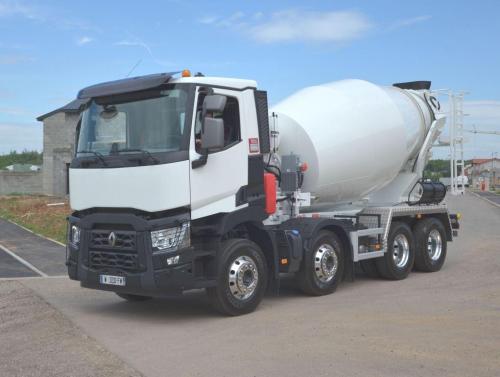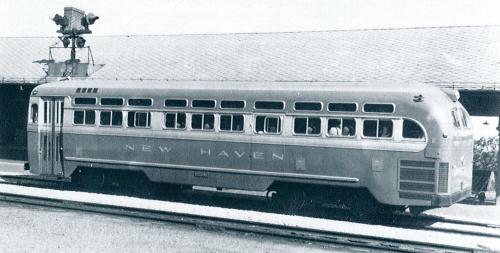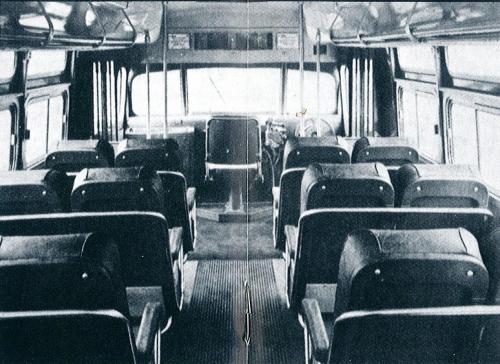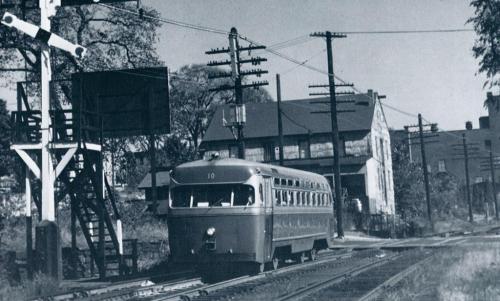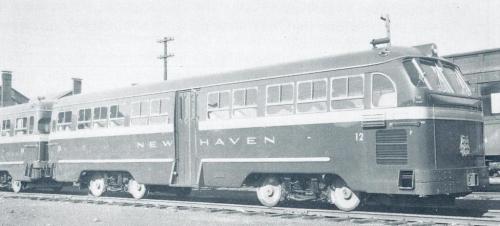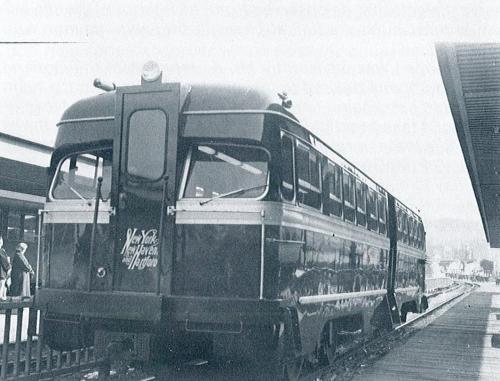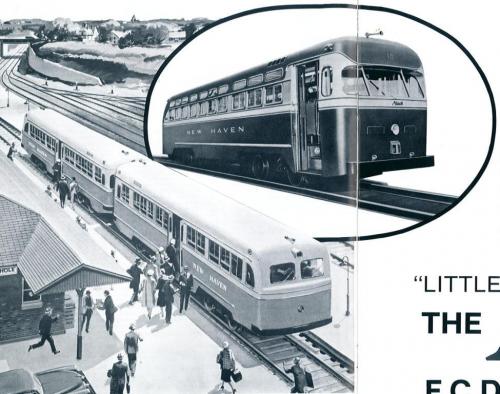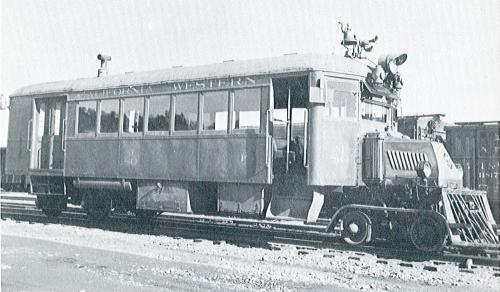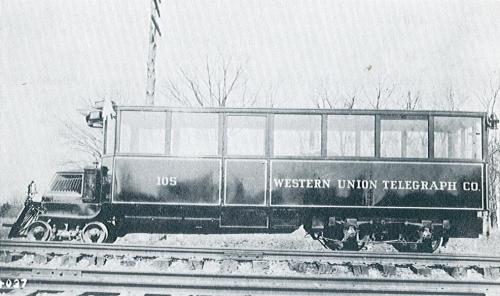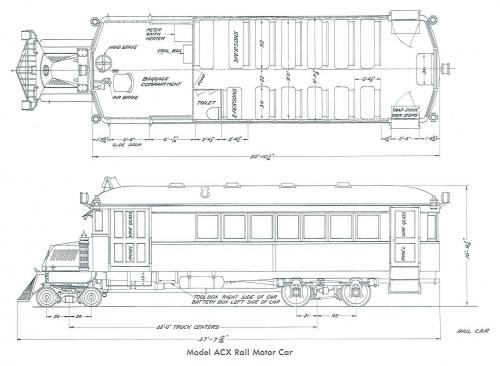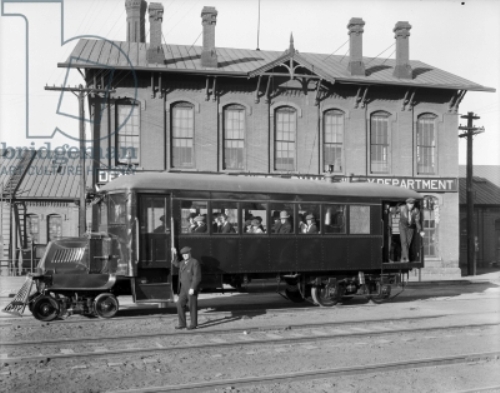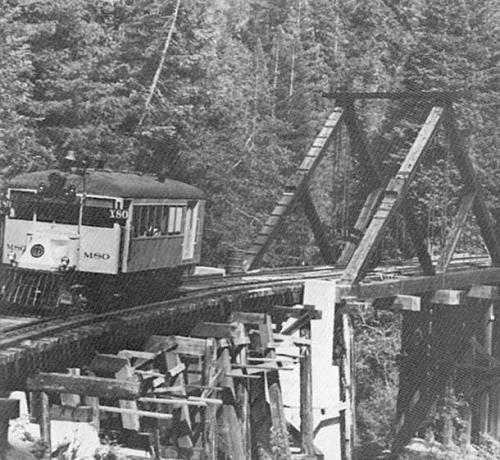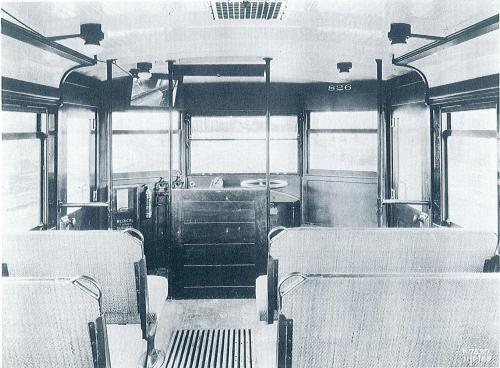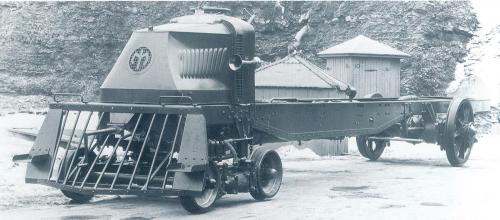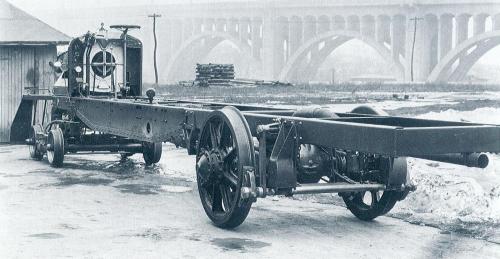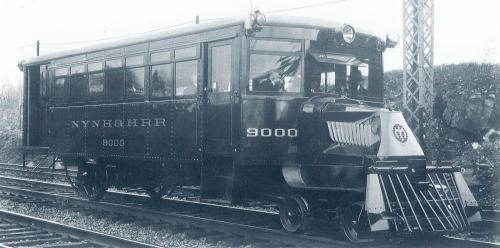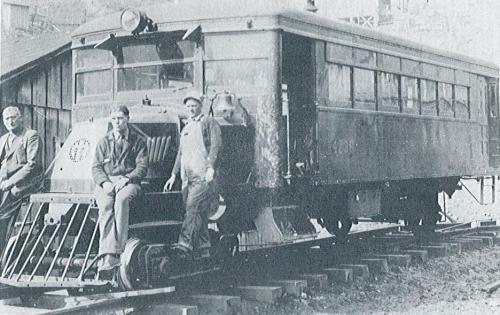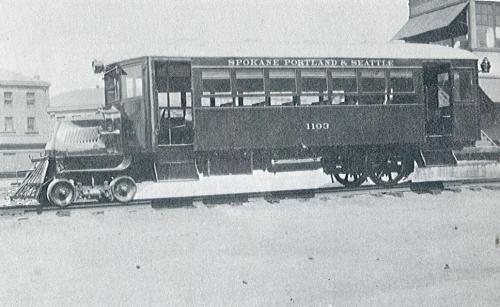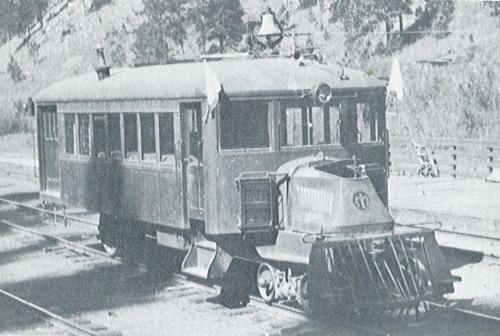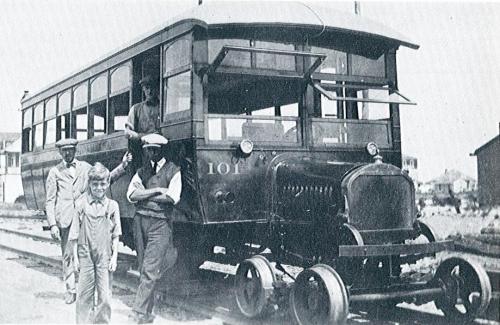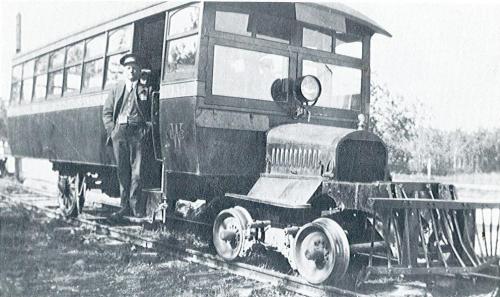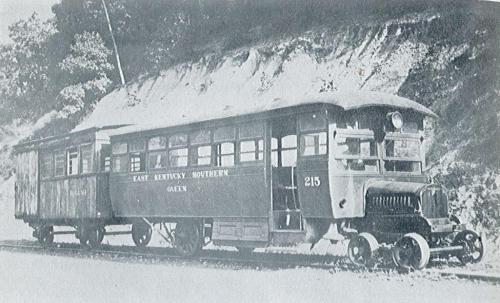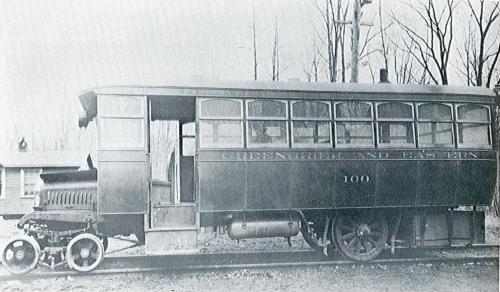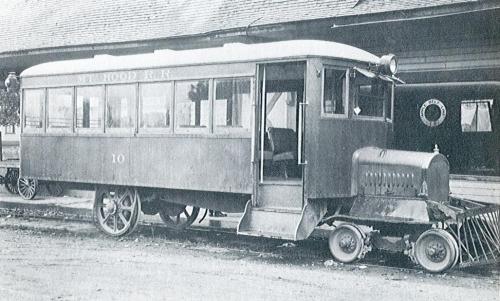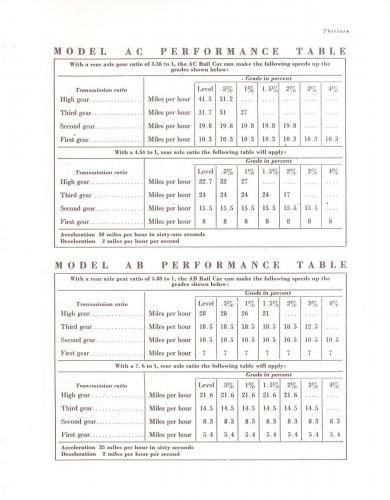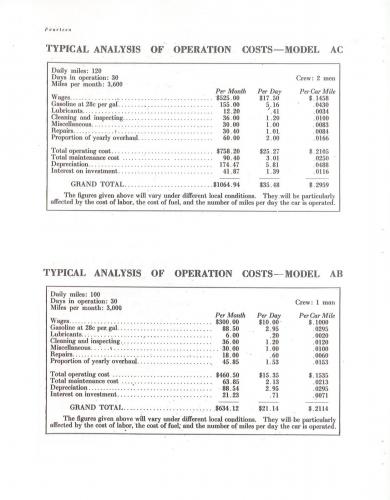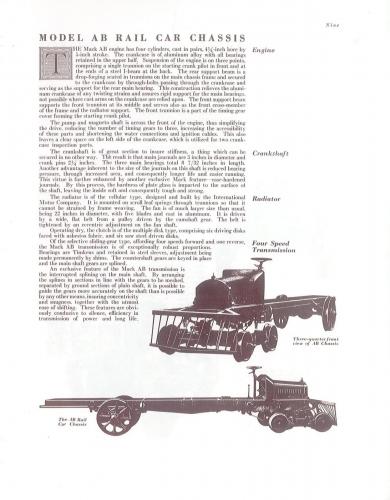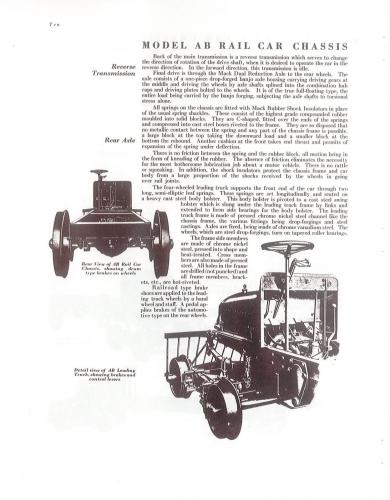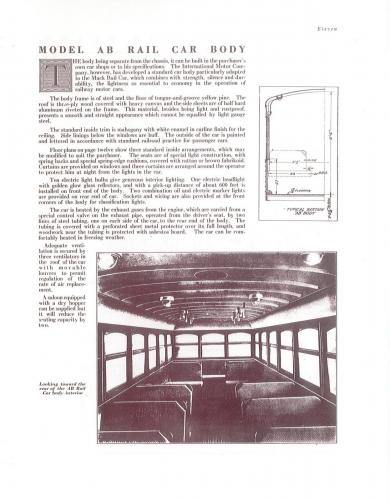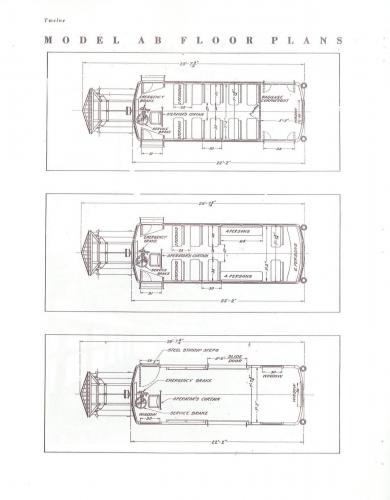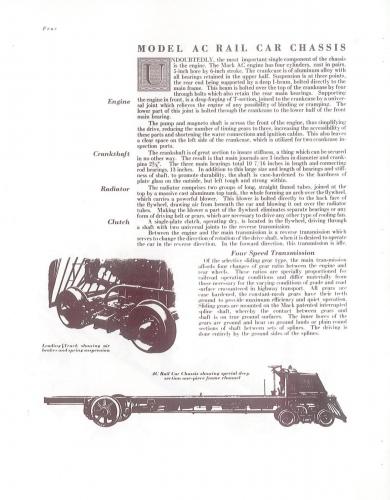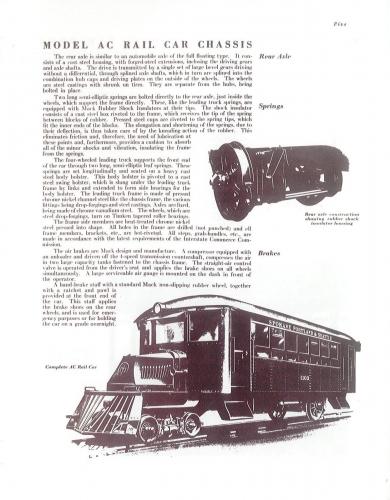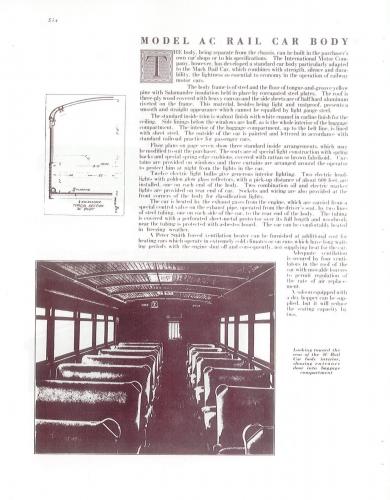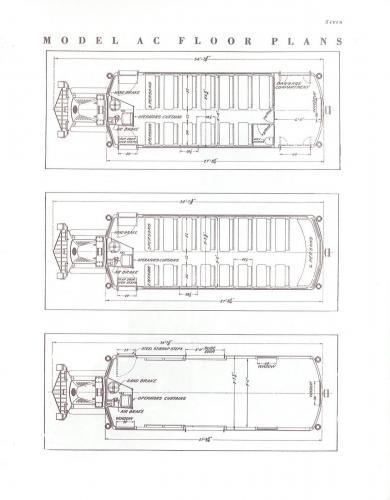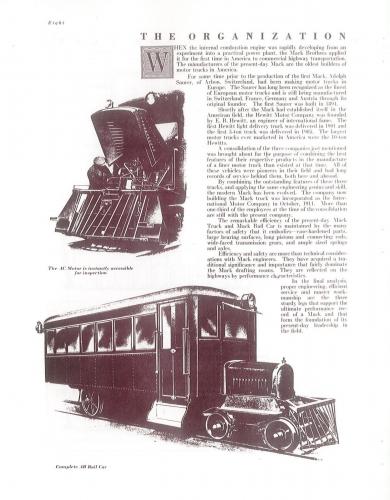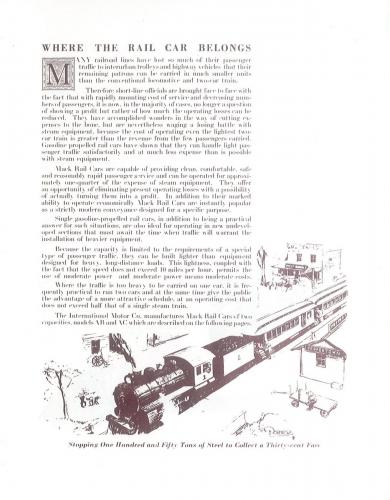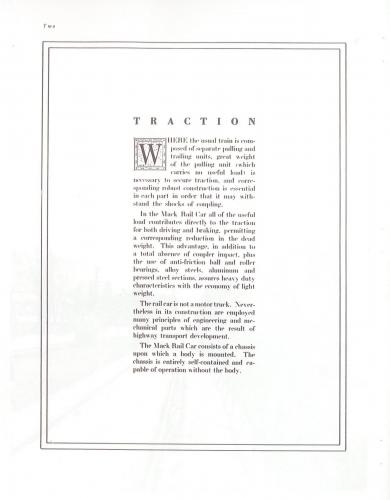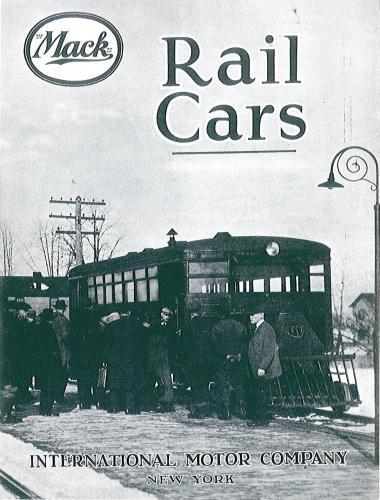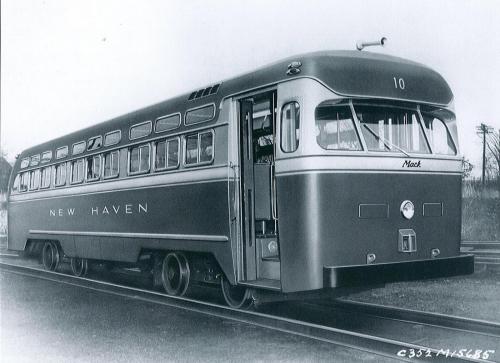
kscarbel2
Moderator-
Posts
18,539 -
Joined
-
Days Won
112
Content Type
Profiles
Forums
Gallery
Events
Blogs
BMT Wiki
Collections
Store
Everything posted by kscarbel2
-
Transport Topics / May 13, 2015 The president of Daimler Trucks North America said the company will not attend the 2016 Mid-America Trucking Show and will instead focus attention next year on the IAA Commercial Vehicles show in Hanover, Germany. In an exclusive interview with Transport Topics, Martin Daum explained the decision and outlined changes he hopes organizers will consider so that DTNA can “support MATS to become a significant show in the world.” “We want to come to Mid-America in a two-year sequence. I really like the IAA format over in Europe – having it every two years,” Daum said. “That makes sense for our industry because we don’t have the short-lived cycles like the passenger-car industry. We have longer investment cycles,” he said. “It is not that easy to every year make a big splash.” Toby Young, president of Exhibit Management Associates, which owns and operates the show in Louisville, Kentucky, confirmed to TT that Daimler has informed him of its decision. He declined additional comment other than saying: “The Mid-America Trucking Show will most definitely take place in 2016.” Looking ahead, Daum said he hopes MATS will be extended by one additional weekday, making it more of a place for original equipment manufacturers and suppliers to meet and share ideas. He described MATS as “an industry show, where you bring your novelties, where you push the envelope, where you show something like we did this year with the SuperTruck, where you introduce new models.”
-
Help with Battery Box part numbers
kscarbel2 replied to BC Mack's topic in Antique and Classic Mack Trucks General Discussion
Why are you starting out your search at PAI? Why not call Watts Mack with your model and serial number, and have them accurately provide/sell you the lower box? -
Press Release / May 13, 2015 Entirely devoted to carrying concrete and perfectly adapted to both on-road and off-road conditions, the Renault Trucks C XLoad is the payload champion in its category. With an unladen weight of just 9,200 kg certified by the French body UTAC, this robust and ultra light vehicle allows hauliers to optimise their delivery rounds and therefore increase their cost efficiency. The Renault Trucks C XLoad 8x4, with twin tyres at the rear, has an unladen weight of only 9,200 kg, certified by UTAC, the official French certification body. Designed for use on-road, but also off-road, the Renault Trucks C XLoad combines an outstanding payload with pulling power, robustness and the comfort of the C range. For this vehicle maintains all the qualities of the Renault Trucks C and also benefits from weight saving equipment, such as aluminium tanks and rents. Mainly designed for concrete transport applications, the Renault Trucks C XLoad is pre-equipped for mounting a cement mixer, which reduces bodybuilding time. The payload champion, the Renault Trucks C XL can carry up to 8 m³ of concrete. This gives it the capacity to save one full load for every 16 delivery rounds, thereby offering significant savings on major worksites and generating considerable savings. .
-
Volvo unveils automatic all-wheel drive truck tech
kscarbel2 replied to kscarbel2's topic in Trucking News
This is a new twist on the “AddiDrive” hydraulically-actuated steer axle drive system developed by French hydrostatic transmission maker Poclain Hydraulics. http://www.poclain-hydraulics.com/en/products/motors/mg http://www.poclain-hydraulics.com/_upload/ressources/media/pdf/on-road.pdf http://www.poclain-hydraulics.com/_upload/ressources/media/pdf/AddiDriveAssist.pdf?nc http://www.poclain-hydraulics.com/en/solution/on-road/on-demand-awd-for-truck MAN began offering the AddiDrive under the name "HydroDrive" in 2005. Later in 2010, Renault began offering the feature on the Premium Lander under the "OptiTrack" name. Mercedes-Benz (HAD) and Terberg (X-Track) also offer the Poclain system, while GINAF uses a similar system from Bosch-Rexroth called "HydroAxle". In the US market, Poclain partnered with Tuthill Drive Systems (TDS), offering a system for medium and heavy trucks utilizing Poclain drive motors. (http://eztracaxle.com/) Volvo contemplated offering the Poclain system on Mack brand trucks but passed. Here’s a a 10x6 Volvo-Mack with Simard twin-steer front axles and the EZ Trac (Poclain) hydraulic front drive system. https://www.youtube.com/watch?v=_a7PhTMr5Fs -
Construction Week / May 12, 2015 Volvo Trucks has unveiled its automatic all-wheel drive technology. The Swedish automaker claims to be the first manufacturer in the world to offer automatic engagement of all-wheel drive construction trucks. Developed for tough environments, Volvo Automatic Traction Control, which is already used on Volvo Construction Equipment’s articulated haulers, is now standard on the Volvo FMX vocational range. “Many drivers connect front-wheel drive or differential lock in good time before a difficult section of terrain, in order to avoid getting stuck,” commented Jonas Odermalm, construction segment manager at Volvo Trucks. “Volvo Automatic Traction Control engages the front-wheel drive when in motion, and only for the short time that it is really needed,” he explained. The system consists of software connected to the wheels’ speed sensors, which detects and controls wheel drive. When a rear wheel starts to slip, power is transferred automatically to the front wheels without the truck losing torque or speed. A dog clutch activates the front-wheel drive in just half a second. The technology, according to the manufacturer, offers drivers improved manoeuvrability, and fleet owners the added benefits of lower fuel consumption and decreased wear and tear. Volvo Trucks contends the system ensures that the optimal drive combination is always enabled, removing the decision from the driver. “[Volvo Automatic Traction Control] is yet another example of how innovative technology can make things easier and smarter than before,” said Ricard Fritz, vice president of the brand. “Just like the Volvo I-Shift revolutionised the gearbox, we are confident that this new development will do the same for the driven front axle.” Volvo Automatic Traction control is now standard on the Volvo FMX, in versions 4x4, 6x6, and 8x6. The system will be offered along with the complete engine programme for Euro 3, 4, 5, and 6 models.
-
Mack Rail – The Rail Cars
kscarbel2 replied to kscarbel2's topic in Modern Mack Truck General Discussion
My pleasure to share more history about America's most iconic truckmaker, so that it may not be forgotten. Facing a market contraction in 1959, Mack Trucks phased out rolling stock production in 1960. With that it mind, it's ironic though not surprising that some units like Sperry Rail Service's FCD continue to operate thru the present day. -
Mack Rail – The Rail Cars
kscarbel2 replied to kscarbel2's topic in Modern Mack Truck General Discussion
Speaking of aviation, Mack chief engineer and vice president Alfred Masury was a strong proponent of rigid airships.Had he not met an untimely death (http://www.bigmacktrucks.com/index.php?/topic/39563-mack-remembrance-alfred-fellows-masury/?hl=masury), I wouldn't have been a bit surprised if he had taken Mack Trucks into some aspect of aviation. From another angle, legendary Mack President and CEO Zenon C.R. Hansen was an early supporter of corporate aviation. -
Mack Rail – The Rail Cars
kscarbel2 replied to kscarbel2's topic in Modern Mack Truck General Discussion
-
Mack Rail – The Rail Cars
kscarbel2 replied to kscarbel2's topic in Modern Mack Truck General Discussion
-
Mack Rail – The Rail Cars
kscarbel2 replied to kscarbel2's topic in Modern Mack Truck General Discussion
-
Mack Rail – The Rail Cars
kscarbel2 replied to kscarbel2's topic in Modern Mack Truck General Discussion
-
Mack Rail – The Rail Cars
kscarbel2 replied to kscarbel2's topic in Modern Mack Truck General Discussion
Providing Railway Operators with Innovative Solutions Mack AB model rail cars Aberdeen & Rockfish RailroadBernabe S. Batista (Cuba)Bowdon Railway CompanyCamp A.A. Humphrey (U.S. Army)Central West Virginia & Southern RailroadChesapeake WesternChestnut Ridge RailwayColumbian National RailwaysCondon, Kinzua & Southern RailroadEast Kentucky Southern RailwayGilmore & Pittsburgh RailroadGreenbrier & Eastern RailroadGuantanamo & Western (Cuba)Hawaii Construction RailwayManitoba Power CompanyManitoba Hydro ElectricMount Hood RailroadNarragansett Pier RailroadNew Mexico Central RailroadPacific Gas & ElectricPittsburgh, Lisbon & Western RailroadSewell Valley RailroadSpalding Miami Lumber CompanyStone Harbor RailroadTela Railroad (serving the United Fruit Company - Honduras)Tropical Oil Company (Columbia – subsidiary of Toronto-based Imperial Oil Ltd.)The Atchinson, Topeka & Sante Fe RailroadThe Phoenix Utility CompanyWillamina & Grand Ronde RailroadWinnipeg Electric CompanyMack AC model rail cars Artemus & Jellico RailroadBuffalo Creek & Gauley RailroadChicago, Burlington & Quincy RailroadCovadonga Railway (Cuba)Great Northern RailroadHavana CentralLewisburg, Milton & Watsonville Passenger Railway CompanyNarragansett Pier RailroadNew York, New Haven & Hartford RailroadNorthern Pacific RailroadRapid City, Back Hills & Western RailroadSoutheast LumberSpokane, Portland & Seattle railroadThe Pennsylvania & Kentucky RailroadWinnipeg Hydro ElectricMack ACX model rail cars California Western RailroadChicago, Rock Island & Pacific RailroadUnited Railways of HavanaWestern Union TelegraphMack ACP model rail cars Chicago, Rock Island & Pacific Railroad Mack AQ model rail cars Chicago, Burlington & Quincy RailroadChicago, Rock Island & Pacific Railroad New York CentralPennsylvania RailroadSouth Manchurian Railway (Korea) Mack AR model rail cars Great Northern RailwayMonongahela RailwayPittsburgh & Lake Erie RailroadReading CompanySouthern Pacific Lines Mack AS model rail cars Canadian NationalGreater Winnipeg Water District RailwayWinnipeg ElectricMack BK model rail cars Wilkes-Barre & Hazleton RailroadMack BX model rail cars Patino Railroad (Bolivia - tin mining)Mack FCD model rail bus Ferro-Carril de Langreo (Spain) New York, New Haven & Hartford RailroadSperry Rail Service -
Mack Rail – The Rail Cars
kscarbel2 replied to kscarbel2's topic in Modern Mack Truck General Discussion
Mack Rail – The Sustainable and Economical Approach to Public Rail Transport No coaling plantsNo watering tanksNo ash pitsNo steaming delaysNo fuel consumed while standingNo night fire-bankingNo excess heavy equipment wear on tracks and bridgesNo smoke or cinders to necessitate frequent cleaning. -
Mack Rail – The Rail Cars
kscarbel2 replied to kscarbel2's topic in Modern Mack Truck General Discussion
-
Mack Rail – The Rail Cars
kscarbel2 replied to kscarbel2's topic in Modern Mack Truck General Discussion
-
Mack Rail – The Rail Cars
kscarbel2 replied to kscarbel2's topic in Modern Mack Truck General Discussion
-
Mack Rail – The Rail Cars
kscarbel2 replied to kscarbel2's topic in Modern Mack Truck General Discussion
The Organization behind the Product When the internal combustion engine was rapidly developing from an experiment into a practical power plant, the Mack Brothers applied it for the first time in America to commercial highway transportation. The manufacturers of the present-day Mack are the oldest builders of motor trucks in America. For some time prior to the production of the first Mack, Adolph Saurer, of Arbon, Switzerland, had been making motor trucks in Europe. The Saurer has long been recognized as the finest of European motor trucks and is still being manufactured in Switzerland, France, Germany and Austria through its original founder. The first Saurer was built in 1894. Shortly after the Mack truck had established itself in the American market, the Hewitt Motor Company was founded by Edward R. Hewitt, an engineer of international fame. The first Hewitt light delivery truck was delivered in 1901, and the first 5-ton truck was delivered in 1905. The largest motor trucks ever marketed in America were the 10-ton Hewitts. A consolidation of Mack Brothers, Saurer and Hewitt was brought about for the purpose of combining the best features of their respective products in the manufacture of a finer motor truck than existed at that time. All of these vehicles were pioneers in their field and had long records of service behind them, both in America and abroad. By combining the outstanding features of these three trucks, and applying the same engineering genius and skill, the modern Mack truck has been evolved. The company now building the Mack truck was incorporated as the International Motor Company in October, 1911. More than one-third of the employees at the time of the consolidation are still with the present company. The remarkable efficiency of the present-day Mack Truck and Mack Rail Car is maintained by the many factors of safety that it embodies – case-hardened parts, large bearing surfaces, long pistons and connecting rods, wide-faced transmission gears, and ample sized springs and axles. Efficiency and safety are more than technical considerations with Mack engineers. They have acquired a traditional significance and importance that fairly dominate the Mack drafting rooms. They are reflected on the highways by performance characteristics. In the final analysis, proper engineering, efficient service and master workmanship are the three sturdy legs that support the ultimate performance record of a Mack truck, and that form the foundation of its present-day leadership in the field. . -
Mack Rail – The Rail Cars
kscarbel2 replied to kscarbel2's topic in Modern Mack Truck General Discussion
Where the rail car belongs Many railroad lines have lost so much of their passenger traffic to inter-urban trolleys and highway vehicles that their remaining patrons can be carried in much smaller units than the conventional locomotive and two-car train. Therefore short-line officials are brought face to face with the fact that with rapidly mounting cost of service and decreasing numbers of passengers, it is now, in the majority of cases, no longer a question of showing a profit but rather of how much the operating losses can be reduced. They have accomplished wonders in the way of cutting expenses to the bone, but are nevertheless waging a losing battle with steam equipment, because the cost of operating even the lightest two-car train is greater than the revenue from the few passengers carried. Gasoline propelled rail cars have shown that they can handle light passenger traffic satisfactorily and at much less expense than is possible with steam equipment. Mack Rail Cars are capable of providing clean, comfortable, safe and reasonably rapid passenger service, and can be operated for approximately one-quarter of the expense of steam equipment. They offer an opportunity of eliminating present operating losses with a possibility of actually turning them into a profit. In addition to their marked ability to operate economically, Mack Rail Cars are instantly popular as a strictly modern conveyance designed for a specific purpose. Single gasoline-propelled rail cars, in addition to being a practical answer for such situations, are also ideal for operating in new undeveloped sections that must await the time when traffic will warrant the installation of heavier equipment. Because the capacity is limited to the requirements of a special type of passenger traffic, they can be built lighter than equipment designed for heavy, long-distance loads. This lightness, coupled with the fact that the speed does not exceed 10 miles per hour, permits the use of moderate power, and moderate power means moderate costs. Where the traffic is too heavy to be carried on one car, it is frequently practical to run two cars, and at that time give the public the advantage of a more attractive schedule, at an operating cost that does not exceed half that of a single steam train. The International Motor Company manufactures Mack Rail Cars of two capacities, models AB and AC. . -
Mack Rail – The Rail Cars
kscarbel2 replied to kscarbel2's topic in Modern Mack Truck General Discussion
Mack Rail – Meeting mobility needs with innovative and environmentally-friendly solutions Where the usual train is composed of separate pulling and trailing units, great weight of the pulling unit (which carries no useful load) is necessary to secure traction, and corresponding robust construction is essential in each part in order that it may withstand the shocks of coupling. In the Mack Rail Car, all of the useful load contributes directly to the traction for both driving and braking, permitting a corresponding reduction in the dead weight. This advantage, in addition to a total absence of coupler impact, plus the use of anti-friction ball and roller bearings, alloy wheels and aluminum and pressed steel sections assures heavy duty characteristics with the economy of light weight. The rail car is not a motor truck. Nevertheless, in its construction are employed many principles of engineering and mechanical parts which are the result of highway transport development. The Mack Rail Car consists of a chassis upon which a body is mounted. The chassis is entirely self-contained and capable of operation without the body. . -
Mack Trucks Inc., America’s oldest commercial vehicle manufacturer, is also the oldest rail motor car manufacturer in the United States. The company sold its first “rail car” to the Uintah Railway Company of Colorado in 1903. Construction began at Mack Trucks’ Brooklyn plant on Atlantic Avenue and was completed in Allentown’s No.1 Division. Mack delivered its second rail car to another Colorado operator, the Silverton Northern Railroad, on August 22, 1905 where it provided passenger service between Eureka and Silverton. The company designed and produced rail cars (also referred to as rail buses), self-propelled railway passenger cars and locomotives. Always leading America forward with cutting edge technology, Mack Trucks was a pioneer in the United States of the concept now commonly known as "light rail". From the versatile Model AB rail bus to the highly advanced Model FCD, Mack Trucks met the needs of both rural communities and cities worldwide with affordable, efficient and versatile public transport. Gasoline, gas-electric and diesel-electric “rolling stock” was produced at the company’s plants in Allentown, Pennsylvania and Plainfield, New Jersey. Forty railroads and twenty-three industrial companies in the continental United States, Hawaii, Canada, Bolivia, Columbia, Cuba, Honduras, Korea and Spain have operated rolling stock produced by Mack Trucks. Mack rolling stock remains in operation to the present day. One of four Mack FCD rail buses purchased by Sperry Rail Service continues to operate in year 2015, some 61 years after being built, performing ultrasonic rail testing for microscopic fissures on the New York City subway system and elsewhere. The Allentown plant produced the first two and one-half ton 25-45 horsepower Model AB omnibus type passenger rail bus in late 1920 for the Chesapeake Western Railway in 1920. In 1921, Mack assembled the first five ton 64 horsepower Model AC omnibus type passenger rail bus for The New York, New Haven and Hartford Railroad. Both the AB and AC models were fitted with a double axle four flanged wheel pony truck at the front, and a single axle two flanged wheel railway truck at the rear. Between 1920 and 1925, contemporary railroad and street railway car builders including Philadelphia-based J.G. Brill Company, Worcester, Massachusetts-based Osgood-Bradley Car Company and Paris, Illinois-based McGuire-Cummings Manufacturing Company all fabricated bodies for Mack rail buses. In 1923, Mack Trucks expanded its rail bus range with the introduction of the 60-80 horsepower Model ACX, which featured a four wheel rear truck and longer chassis to accommodate longer bodies. Mack Trucks – A “Light Rail” Pioneer From 1903 thru the 1950s, Mack engineers helped pioneered the concept of “light rail” in North America and around the world. As we strive today to improve air quality and reduce energy consumption for a more sustainable future, a forward-thinking Mack Trucks was already addressing these issues head-on almost one hundred years ago. Mack’s culminating achievement, the advanced Model FCD light rail bus, represented cutting edge light rail technology ahead of its time (such was the norm at Mack Trucks, the iconic American manufacturer that created future trends rather than follow existing ones). Fast, efficient and comfortable, the Mack FCD provided an ever-growing number of commuters with high-performance public transport between suburban areas and city centers. At a time when urban planners and transport companies are looking once more to light rail as a flexible, environmentally friendly and highly economical means of public transport, the fundamentals of Mack’s FCD light rail bus are as valid today as they were 65 years ago. Like its light rail vehicle producing successors Alstom, Bombardier and Siemens, the rolling stock unit of Mack Trucks consistently offered innovative and environmentally-friendly technologies for efficient and cost-effective public rail transport, providing operators with high levels of capacity and operational flexibility for both urban and regional requirements. Related reading: http://www.bigmacktrucks.com/index.php?/topic/33469-mack-rail-the-rail-cars/?p=216270 http://www.bigmacktrucks.com/index.php?/topic/33544-mack-rail-global-sales/?hl=acx http://www.bigmacktrucks.com/index.php?/topic/33657-mack-rail-the-locomotives/?p=218642 http://www.bigmacktrucks.com/index.php?/topic/33763-mack-rail-sperry-rail-service-the-oldest-operator-of-mack-rail-buses/?hl=fcd http://www.bigmacktrucks.com/index.php?/topic/39495-update-sperry-rails-mack-fcd-rail-bus/?hl=fcd http://www.bigmacktrucks.com/index.php?/topic/33179-mack-trucks-sales-marketing/?hl=fcd#entry214970 http://www.bigmacktrucks.com/index.php?/topic/34219-mack-trucks-the-facilities/?hl=plainfield#entry226401 .
-
You're quite welcome. I'm not speaking of an owner's manual or maintenance manual, rather I'm speaking of a parts book.
-
Mack part number 447GC218 was the water pump seal for most Mack gasoline engines. Do you have an engine parts book for your truck's ENF707A (or ENF707B) engine? And the bearings are probably Mack part numbers 46AX451 and 46AX452. But double check a 707 parts book.
-
Rubber cab bushings
kscarbel2 replied to Coenut's topic in Antique and Classic Mack Trucks General Discussion
The Mack part number is 20QL304. Why not give the good folks at Watts Mack a call? -
T-Line Specialty Vehicles (www.tlinetrucks.com), producer of Diamond Reo heavy trucks, is providing a glimpse of their long awaited new Raider II. https://www.facebook.com/TLineSV?_fb_noscript=1# The company says the Raider II will be available this summer on a limited production basis. Initial variants, including glider kits, rolling gliders and complete trucks, will have set-back front axles. All units will be "made to order". In addition, downloadable literature is now available for the company’ model TCS20 set-forward front axle and model TCL20B set-back front axle glider kits. http://tlinetrucks.com/wp-content/uploads/2015/05/TCS20GliderSpecSheet.pdf http://tlinetrucks.com/wp-content/uploads/2015/05/TCL20BGliderSpecSheet.pdf Related reading: http://www.bigmacktrucks.com/index.php?/topic/39126-diamond-specialty-vehicles-announces-all-new-models/
-
There's a very good reason why Mack engineers specified 24-volt starting for E9 V-8 powered Mack Trucks. You want the "kick" of 24 volt starting (the preference worldwide), for turning over a 16-liter engine, particularly in cold conditions. You are doing yourself a disservice if you change an E9-powered Mack truck's starting system over from 24 to 12 volts.
BigMackTrucks.com
BigMackTrucks.com is a support forum for antique, classic and modern Mack Trucks! The forum is owned and maintained by Watt's Truck Center, Inc. an independent, full service Mack dealer. The forums are not affiliated with Mack Trucks, Inc.
Our Vendors and Advertisers
Thank you for your support!


